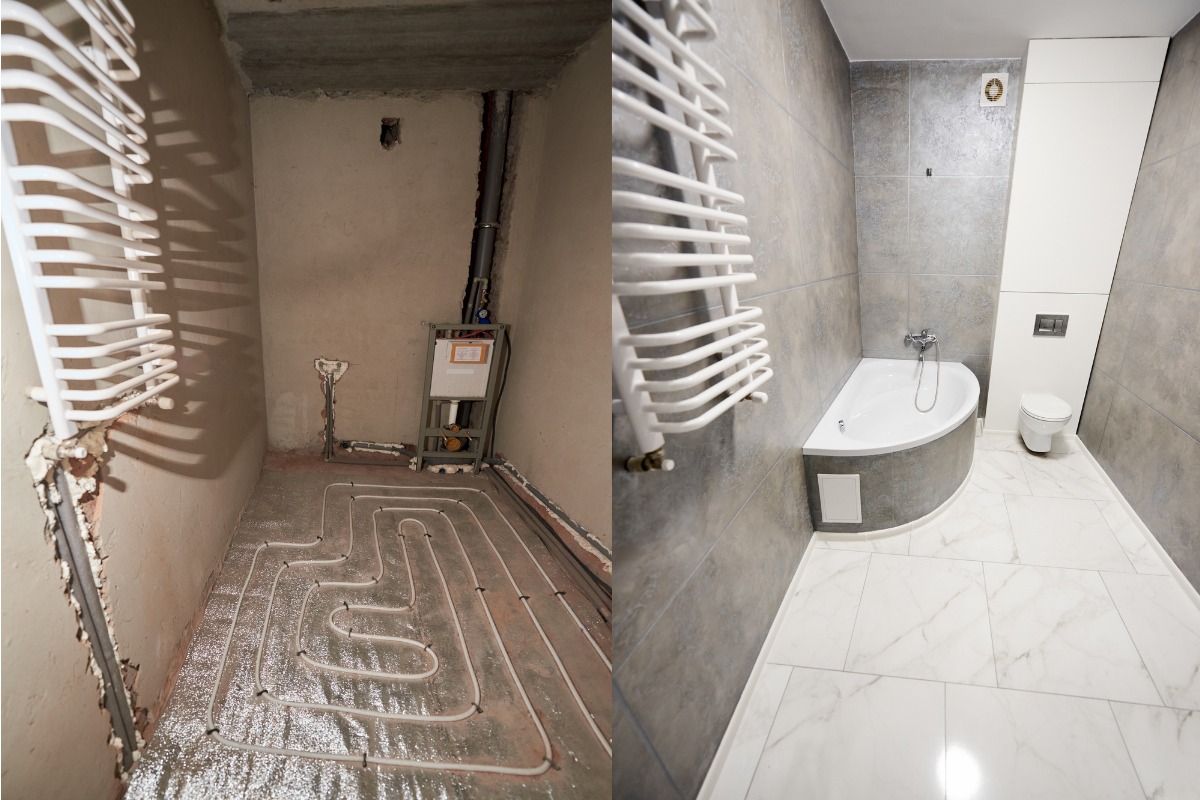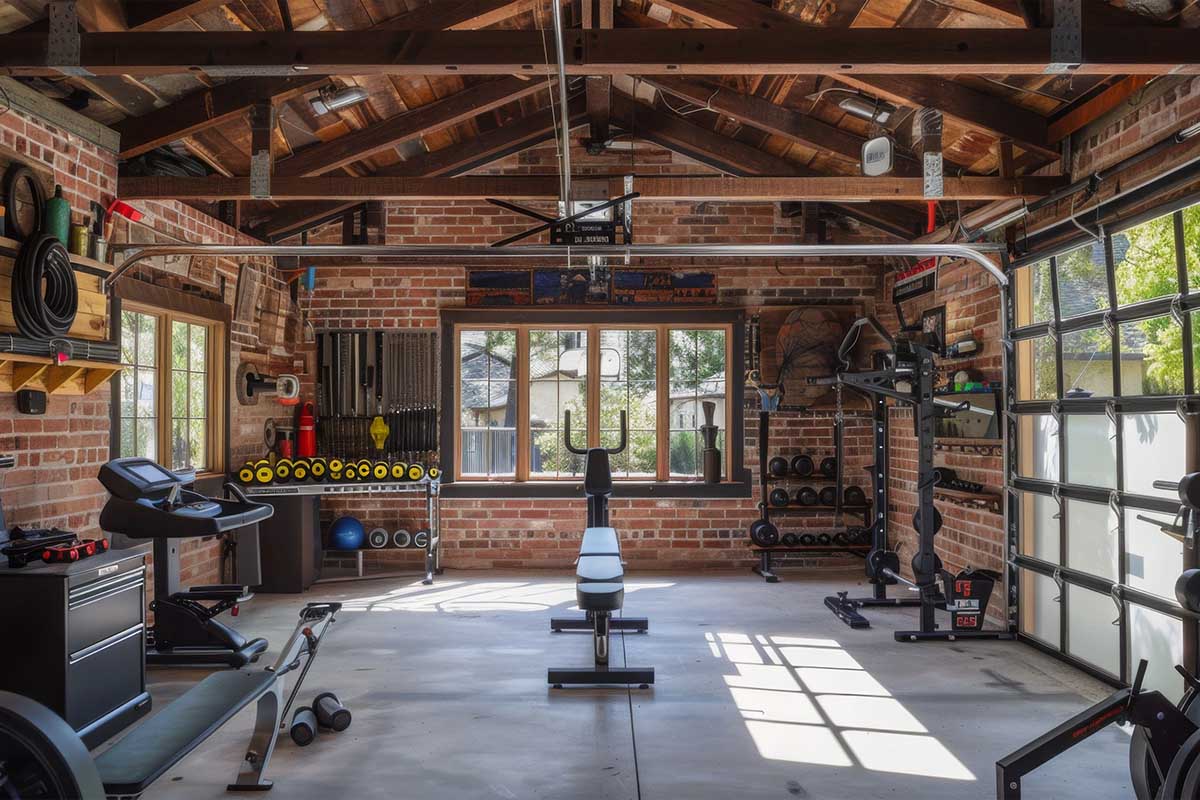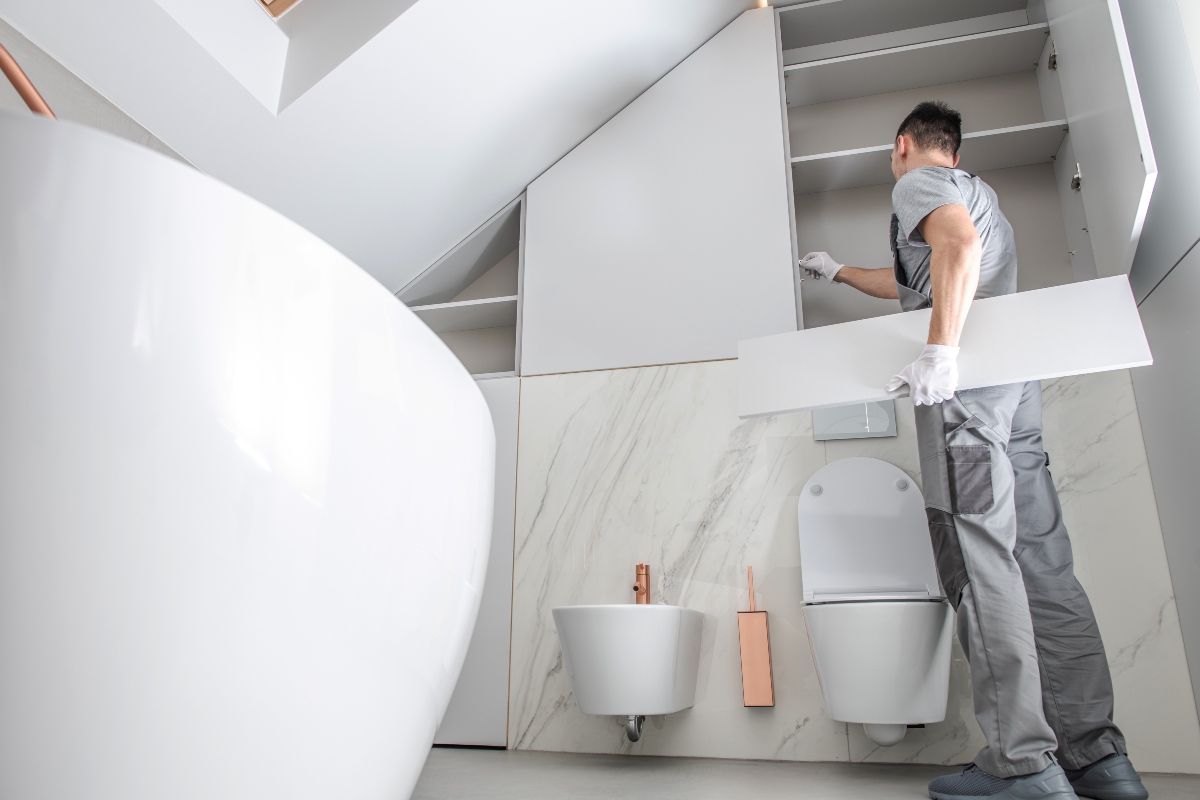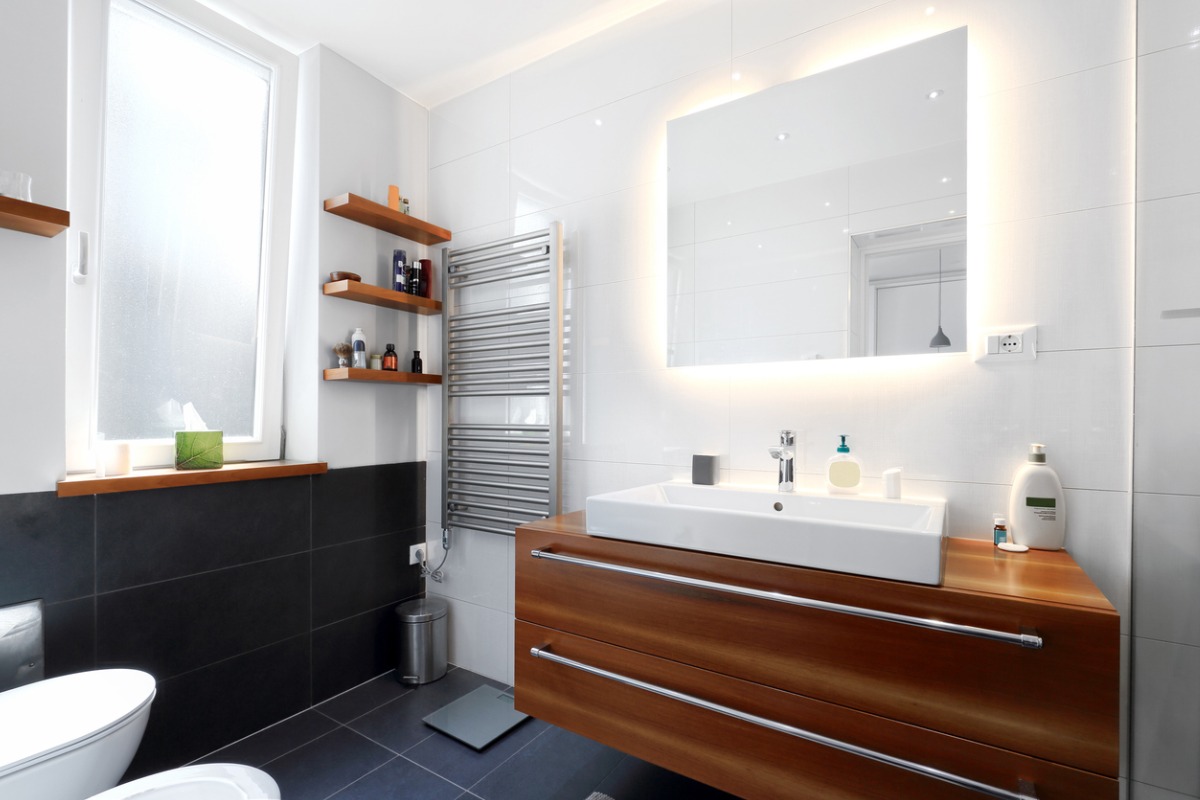If you are working with a small ensuite and trying to create a calm, functional space, it can be hard to choose between a wet room and a classic ensuite bathroom layout. Wet rooms look modern, feel open, and can be brilliant for...
A garage conversion transforms your existing garage into a functional living space. Instead of a cold, concrete storage space, you could have a home office, playroom, or guest bedroom. Most garages, especially single garages attached to the main house, are ideal because they’re already part of the existing structure. This makes integration easier and often keeps garage conversion costs down compared to building anew.
The process involves assessing the garage's existing foundations to ensure compliance with building regulations and determining whether planning permission is required. Whether you're eyeing a DIY garage conversion or hiring a garage conversion specialist, understanding the basics ensures your new space is both practical and compliant.
Why Convert Your Garage?
Converting a garage offers huge benefits. It’s a cost-effective way to gain extra living space without major construction. A well-executed garage conversion can boost your home’s value by up to 20%, making it a smart investment. Plus, it’s versatile – think utility room, home gym, or even a partial garage conversion to keep some storage space.
The beauty of a garage conversion project lies in using the existing structure, which saves time and money. However, ensuring the converted garage meets fire safety and insulation standards is key to creating a comfortable, habitable room.
Planning Permission: Do You Need It?
Here’s the good news: most garage conversions don’t require planning permission if they’re internal and don’t expand the building’s footprint. This falls under permitted development rights, which simplify the process for homeowners. However, it’s wise to check with your local authority to confirm, as rules vary.
For a standard single garage conversion, replacing the garage door with a window or adding insulation typically doesn’t need approval. But if you’re making significant external changes or converting a detached garage into a separate dwelling, you might need to gain planning permission. A lawful development certificate can provide peace of mind that your project is compliant.
When Planning Permission is Required
Certain scenarios require planning permission. If your home is in a conservation area or a listed building, even minor changes to the existing structure could require approval. For example, altering a flat roof or creating a standalone habitable space in a detached garage typically requires approval from the local building control department.
If your property has had its permitted development rights removed – common in newer developments – you’ll likely need to apply for planning permission. Always consult your local authority early to avoid delays in your garage conversion project.
Permitted Development Rights 101
Permitted development rights allow certain home improvements, such as most garage conversions, to be carried out without the need for full planning permission. For single-storey garages, internal changes such as adding new flooring or garage conversion wall insulation typically qualify. However, if you’re altering the garage roof or converting it into a separate living space, you might step outside these rights.
To stay safe, verify with your local authority whether your conversion project falls under permitted development. This ensures your new room complies without unnecessary hurdles.
Conservation Areas and Listed Buildings
Homes in conservation areas face stricter rules to preserve the area’s character. Even small changes, like replacing a garage door, might require planning permission. For listed buildings, listed building consent is required to protect their historical features.
In these cases, a structural engineer or garage conversion specialist can help navigate regulations, ensuring your newly converted space respects the property’s heritage while meeting your needs.
Building Regulations: Non-Negotiable for Safety
Even if planning permission isn’t required, building regulations are essential for any garage conversion that creates habitable space. These rules ensure the converted garage is safe, energy-efficient, and comfortable. You’ll need to submit a building notice or full plans to your local building control department.
A building control officer will inspect the various stages of the work, from the concrete slab to the electrical wiring. Compliance with garage conversion building regulations ensures your new space meets standards and won’t cause issues when selling your home.
Why Building Regulations Matter
Building regulations aren’t just red tape – they protect you and future owners by ensuring the garage conversion is structurally sound and safe. Without building regulations approval, you could face challenges when selling, as buyers want assurance that the new room meets codes.
Key areas include insulating garage floors, ensuring fire safety, and upgrading the garage’s existing foundations if needed. This makes your habitable room durable and cosy.

Structural Integrity and Foundations
Before starting, assess the garage’s existing foundations. Most garages have a concrete slab, but it may need reinforcement to support a habitable room. A structural engineer can check if the foundations are adequate, especially for detached garages.
If the concrete slab is below the external ground level, you might need to raise it to prevent damp. This step is critical for a successful garage conversion.
Insulating Your Garage Conversion
Insulation transforms a chilly garage into a warm living space. Garage conversion wall insulation, often using insulated plasterboard, is a must to meet energy efficiency standards. Don’t skip roof insulation – whether it’s a flat roof or a pitched roof, it prevents heat loss.
For garage floors, add insulation under new flooring to keep the space comfortable. Proper insulation not only meets building regulations but also helps lower your energy bills in the converted garage.
Fire Safety Essentials
Fire safety is crucial in garage conversions, particularly if the new room is located within the main house. You’ll need an alternative escape route, like a window or door, and fire-resistant materials.
Install smoke alarms and ensure the garage ceiling complies with fire safety codes. This keeps your newly converted space safe for everyone.
Ventilation and Natural Light
Good ventilation prevents moisture buildup in your garage conversion space. Adding windows where the garage door once stood brings in natural light, making the new room feel bright and welcoming.
Building regulations require adequate airflow, so consider installing vents or extractors, especially in spaces like utility rooms. This ensures a healthy, comfortable environment.
Electrical Wiring and Safety
Electrical wiring in a garage conversion must meet building regulations. You may need a separate consumer unit or your own miniature circuit breaker to handle the new room’s power needs safely.
Hire a qualified electrician to install wiring and a consumer unit. This prevents overloading your home’s system and ensures the converted garage is safe.
Garage Conversion Costs: Budgeting Tips
Garage conversion costs typically range from £10,000 to £20,000 for a single garage in 2025. This covers materials, labour, and compliance fees. Detached garage conversions or those requiring extensive structural work can cost more, up to £25,000.
Factors such as insulation, roof covering, and party wall agreements can influence the cost of a garage conversion. A DIY garage conversion can save money, but professional help ensures quality and compliance.
Factors Affecting Costs
Several elements drive garage conversion costs. The condition of the existing structure, such as the need to upgrade garage floors or the garage roof, plays a significant role. Adding features like natural light or complex electrical wiring also increases expenses.
Location matters too – urban areas often have higher labour costs. Plan your budget early to avoid surprises during the conversion project.
DIY vs Professional Conversion
A DIY garage conversion is tempting for homeowners who are handy. You can save on labour by tackling tasks like insulating walls or installing new flooring. However, building regulations still apply, and mistakes can be costly.
For complex projects, such as those involving a pitched roof or listed building consent, a garage conversion specialist ensures that everything meets the required standards, saving you stress.
Preparing Your Garage for Conversion
Start your garage conversion by clearing out storage space and inspecting the existing garage. Check for issues like leaks in the garage roof or dampness in the concrete slab.
This prep work sets the stage for a smooth conversion project, ensuring the new space is ready for transformation into a habitable room.
Replacing the Garage Door
Replacing the garage door is a key step. Brick it up and add a window to bring in natural light and blend the new room with the main house.
This change enhances both aesthetics and functionality, making the converted garage feel like a natural extension of your home.
Roof Considerations
For flat roof garages, ensure proper roof insulation and check the roof covering for durability. Pitched roofs may require less maintenance but still necessitate insulation to meet energy standards.
Choose based on your garage’s design to keep the new space warm and efficient.
Design Tips for Your New Room
Design your garage conversion to maximise extra living space. Opt for open layouts to make the new room feel spacious and airy. Built-in storage can keep the area clutter-free.
Consider how the converted garage seamlessly connects to the main house, creating a practical and inviting habitable space.

So...Do You Need Planning Permission?
Do you need planning permission to convert your garage into a room? In most cases, no – especially for internal conversions that don’t alter the existing structure’s footprint, thanks to permitted development rights. However, if you’re in a conservation area, dealing with a listed building, or making significant external changes like altering a flat roof or converting a detached garage into a separate dwelling, you’ll likely need to apply for planning permission or listed building consent.
Always check with your local authority to confirm, and consider a lawful development certificate for peace of mind. By addressing building regulations, insulating properly, and planning for fire safety and natural light, your garage conversion project can create a fantastic new space that’s both compliant and cosy.
The Conversion Guy - A Trusted Garage Conversion Specialist in Derbyshire & Staffordshire
Are you ready to take the plunge and transform your garage into a warm, welcoming living space? Well, look no further! The Conversion Guy is committed to providing you with a garage conversion experience that is unparalleled.
With over 40 years of experience in garage conversions, we are looking forward to helping you turn your garage into a functional and beautiful space! We love talking conversions, so be sure to get in touch today or book a free consultation and start your journey towards a more spacious, versatile home.
From the Learning Centre
Explore our resources and learn about pricing, bathroom refits, kitchen kitchen renovations, loft conversions and many other home improvements in our Learning Centre








